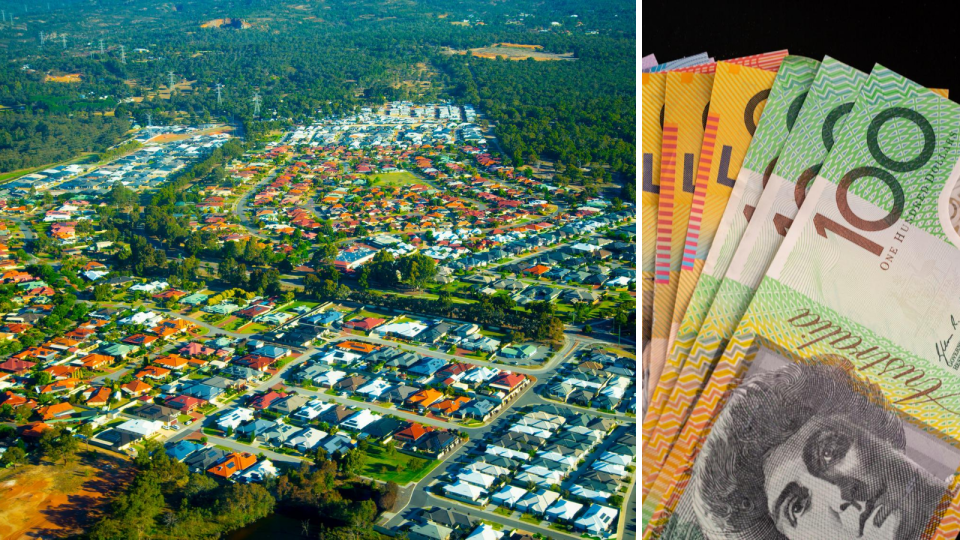The hidden factors driving house prices

House prices – is there a topic that raises the passion of Australians more than this?
A common theme from many looking at house prices is that affordability in Australia is poor because of a combination of tax rules on negative gearing and capital gains tax in particular, but also given the structural lowering of interest rates over the past three decades.
The stories of investors outbidding first home buyers are legendary. There was even a recent example of an 8 year old boy bidding successfully for a house in Sydney on behalf of his father who was an investor.
The outrage was palpable! It was presented as the classic illustration of a first home buyer being squeezed out, yet again, from an investor.
More from The Kouk: Get ready for years and years of low interest rates
More from The Kouk: How to fix Australia’s labour woes
But when we dissect house price changes and trends, it is obvious that tax rules and interest rates over the few decades have little lasting impact on house prices. It is other economic and demographic issues that are more fundamental in determining house price changes.
To show this, I will examine house price changes in Perth.
Perth – a fabulous city
Perth is a city of over 2 million people. Its population has been growing for many decades and its economy is linked to the fortunes of the mining sector.
When it comes to drivers of house prices, residents of Perth have the same negative gearing and capital gains tax rules as the good folk of Sydney and Melbourne and the rest of Australia.
Perth-based mortgage holders also pay the same interest rates as all other Australians which is the joy of the RBA setting monetary policy for all of Australia and not just individual States, Territories or industries.
On these important issues for housing, there is no difference between buyers in Perth and Sydney, Hobart or Bendigo, Canberra or Rockhampton when it comes to influences and decisions to buy and sell residential property.
If these issues were the key long-term drivers of house prices, you might think that Perth prices would be trending in much the same way as other capital cities in Australia, particularly over the course of long run, which can be classified as 10 plus years.
Interestingly, this is not the case.
In fact, according to Australian Bureau of Statistics and CoreLogic data, Perth house prices are lower now than in the December quarter 2006.
That is no change in house prices in around 14 years.
By way of contrast, over that time frame Sydney house prices are up 100 per cent, while Melbourne is up 120 per cent.
There is clearly a massive under-performance of Perth house prices that cannot be explained by tax rules or interest rates. And by the way, since the end of 2006, house prices are up 55 per cent in Brisbane, 61 per cent in Adelaide, 81 per cent in Hobart, 25 per cent in Darwin and 67 per cent in Canberra.
Again, just to reiterate, house prices in each of these cities has been impacted by the same tax rules and interest rates as Perth and Sydney.
At this point, differences in wages growth can be ruled out as an influence. Since 2006, cumulative wages growth in WA has been 53 per cent to be the strongest of any State or territory while, curiously, NSW wages growth was weakest at 48 per cent.
But any difference in wages growth, like interest rates and tax rules is miniscule.
What else is driving house prices?
It should be obvious but house prices, like most other goods and services, are strongly impacted by supply and demand.
Simple.
In Perth, as the mining investment surged from the early 2000s, peaked and then collapsed during the GFC, rose temporarily then free-fell in the early 2010s, so too did demand for housing.
The people who flew in during the booms subsequently flew out and in doing so, demand for housing was undermined.
Even though Perth’s population rose from 1.55 million in 2006 to a tick over 2 million in 2020, this increase was more than matched by a surge in housing construction (extra supply) with two booms, between 2004 and 2007 and again from 2013 to 2016.
Council zoning laws and public transport infrastructure can also influence prices and these are likely to have been more likely to dampen prices in Perth than, say, Sydney and Melbourne where population density is greater. The sprawl of new suburbs in Perth has keep a lid on prices.
But in simple terms, Perth has had an experience where supply outstripped demand and this dampened prices. This glut of housing also showed up in high rental vacancy rates and falling rents as landlords struggled to find tenants.
Changes in unemployment and household formation can also influence but again, the broad trends in these has been similar in WA to the rest of Australia, certainly over the longer run.
House prices will remain a hot issue in Australia but the drivers of price changes are not the ones often touted.
This is not to say there are cycles that are linked to big changes in interest rates or when tax rules are adjusted. They do have an impact but the effects are usually relatively short term.
Most important in the determination of house prices are demand from population growth and household formation and supply by the addition to the housing stock from new construction activity.
The experience of Perth shows this.
Make your money work with Yahoo Finance’s daily newsletter. Sign up here and stay on top of the latest money, economy, property and work news.
Follow Yahoo Finance Australia on Facebook, Twitter, Instagram and LinkedIn.


